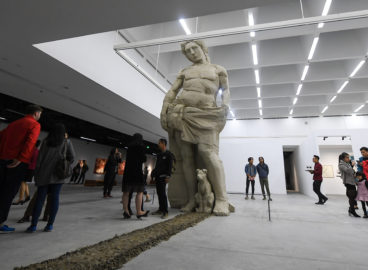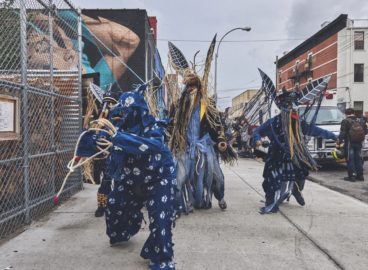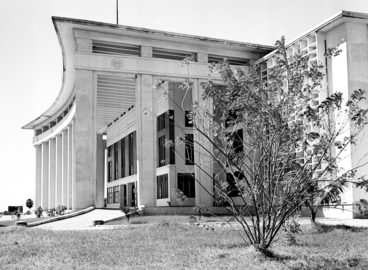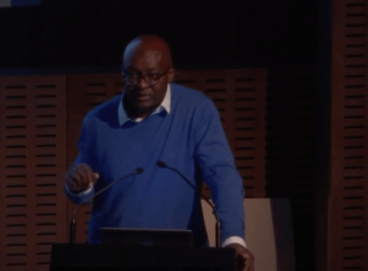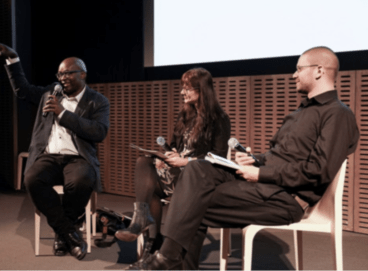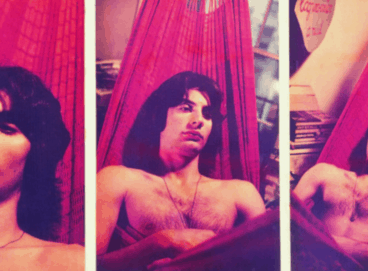The 2021 C-MAP seminar series, titled Transversal Orientations, was held on Zoom across four panels on June 2, 3, 9, and 10. Included here are abstracts and recordings of the panels. In order to continue the conversations, written responses from Chairat Polmuk, Laine Kristberga, Hlonipha Mokoena, and Riánsares Lozano de la Pola, will soon to be linked on this page. Transversal Orientations was co-organized by C-MAP Fellows Nancy Dantas, Inga Lāce, Madeline Murphy Turner, and Wong Binghao.
The Contemporary and Modern Art Perspectives (C-MAP) research groups periodically organize a seminar among all four groups that connects their broad research interests and enables members to think more deeply about how the Museum might best address a global view of modern and contemporary art. Hinged on the transversal as a means to engage with and envision new networks and ways of thinking about modern and contemporary art, the 2021 edition offered an exploration and interrogation of the intertwining of multiple coeval life-worlds through concepts of “extending across.”
Over the course of two weeks, transversalism was offered and considered as a third, enabling term. To transverse is to surpass bipolar socio-historically constructed oppositions such as traditional and modern, male and female, man and nature, local and foreign, theory and practice, etc. Rather than adopting a center-periphery dyad or adhering to “mainstream” canonical standards, changing our perspective of looking at art opens up a way to account for different philosophies and nuances of comparison. This seminar series made reference to the methodology of “minor” transnationalism, to think and relate along other scales of knowability.
In addition, the seminar considered what it means to penetrate, exceed, and undermine geopolitical borders that have been set up to define the places that are safe and unsafe; accessible and inaccessible; to construct an “us” and a “them.” A border, as Gloria Anzaldúa writes, “is a dividing line, a narrow strip along a steep edge. A borderland is a vague and undetermined place created by the emotional residue of an unnatural boundary. It is in a constant state of transition.”
By considering the transversal in its temporal, geographic and/or directional dimensions, as simultaneity, the seminar series elucidated the implications of the adoption of this operative term to art history, the museum, exhibitions, collections, philosophy and/or artistic practice. In doing this, new relational terms, stories, and people can be thought of together again.
Panel 1: Looking Sideways
This panel examined the processes of migration and contra-flows connecting regions while examining their artistic legacies. Looking at particular geographies, artists, and their stories across time, it aimed to challenge mainstream conceptions of the directionality of exchange within modern and contemporary art. How can minor positions weave a fabric of their own links directly, bypassing the centers of power and information? How can these transnational shared stories be acknowledged and told in a context that recognizes their complexity within history and display systems largely guided by national or global presentations?
Sorawit Songsataya, artist, Te Whanganui-a-Tara Wellington, Aotearoa, New Zealand
Corina L. Apostol, Curator, Tallinn Art Hall, Tallinn, Estonia
Ruth Simbao, DSI/NRF SARChi Chair in Geopolitics and the Arts of Africa and Professor, Department of Fine Arts, Rhodes University, South Africa
Introduced by Ugochukwu-Smooth C. Nzewi, Steven and Lisa Tananbaum Curator of Painting and Sculpture, MoMA and moderated by Wong Binghao, C-MAP Asia Fellow, MoMA.
Response by Chairat Polmuk, Lecturer, Department of Thai, Chulalongkorn University, Bangkok. You can read it here.
Panel 2: Acts of Transfer and the Repertoire
This panel was organized around the idea of the transversal as transfer between disciplines, geographies, the performer, audience and participants, and/or the professional and nonprofessional. By looking at and considering the “repertoire” and acts of transfer through, for instance, translation and embodied dialogue, “hidden” processes of transnational contact and local histories, new cartographies, and unseen relations come into evidence.
Tsitsi Ella Jaji, Associate Professor of English and Africa and African American Studies, Duke University
Laura Anderson Barbata, transdisciplinary artist, Mexico City/Brooklyn
Lina Lapelyte, artist, Vilnius/London
Introduced by Roxana Marcoci, Senior Curator, Department of Photography, MoMA and moderated by Inga Lāce, C-MAP Central and Eastern Europe Fellow, MoMA.
Response by Laine Kristberga, Assistant Professor and Researcher, Institute of Philisophy and Sociology of the University of Latvia, Riga. You can read it here.
Panel 3: Entangled Terrains
This panel is the outcome of an invitation to Sandra Benites, Black Athena Collective, and Chie Ikeya to reconsider or remap regions. Thinking about people who cross borders and borders that cross people, the session presented perspectives that acknowledge multidirectional histories of migration, colonialism, and the destabilization of current geographical perimeters. Panelists were tasked with reconsidering territorial logic and place vis-a-vis the mobility of individuals; how our relationship with the inhabited terrain might reformulate imposed delimitations. In this session, borderlands and the spaces in-between were examined, and the manifold ways in which art and visual culture entangle terrain.
Sandra Benites, Adjunct Curator for Brazilian Art, Museu de Arte de São Paulo Assis Chateaubriand (MASP), São Paulo, Brazil
Black Athena Collective, Artists Heba Y. Amin, Egypt, and Dawit L. Petros, Eritrea/Canada
Chie Ikeya, Associate Professor of History at Rutgers University, New Brunswick, New Jersey
Introduced by Sean Anderson, Associate Curator, Department of Architecture and Design, MoMA and moderated by Nancy Dantas, C-MAP Africa Fellow, MoMA.
Response by Hlonipha Mokoena, Associate Professor, Wits Institute for Social and Economic Research of the University of the Witwatersrand, Johannesburg. You can read it in English here and in Portuguese here.
Panel 4: The Politics of Position
This panel explored the particular conditions of locality and the productive tensions between local and global contexts. How do the languages, values, and histories of art and its attendant sociopolitical conditions differ from place to place? Can they be translated, communicated, and made legible, if at all, on a global scale, and what are the stakes of this transfer? Invited speakers discussed the specificities of their local or regional positions or punctuated a pristine map of universality. These discussions aimed to generate understandings of art and culture that are not uniformly appraised and consumed, as well as a sensitivity and humility when encountering art from unfamiliar contexts.
Jeannine Tang, Assistant Professor of Modern and Contemporary Art History and Interim Program Director of Art History and Visual Studies, The New School, New York
Jaanus Samma, artist, Tallinn, Estonia
Irmgard Emmelhainz, independent translator, writer, and researcher, Mexico City
Introduced by Inés Katzenstein, Director, Patricia Phelps de Cisneros Research Institute for the Study of Art from Latin America, and Curator of Latin American Art, Department of Drawings and Prints, MoMA and moderated by Madeline Murphy Turner, C-MAP Latin America/Cisneros Institute Research Fellow, MoMA; Ph.D. Candidate, The Institute of Fine Arts, New York University.
Response by Riánsares Lozano de la Pola, Researcher and Professor at the Instituto de Investigaciones Estéticas, Mexico City. You can read it in English here and in Spanish here.
View the past event page here.
